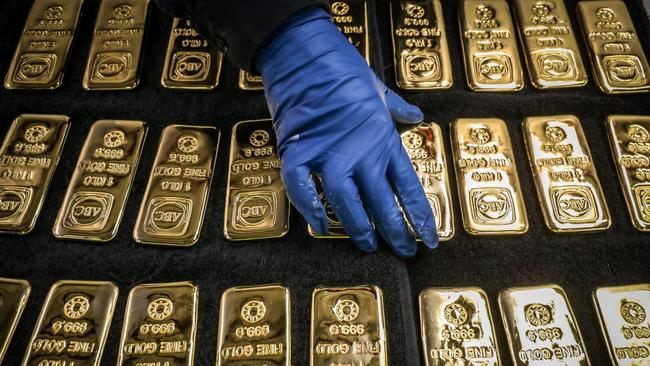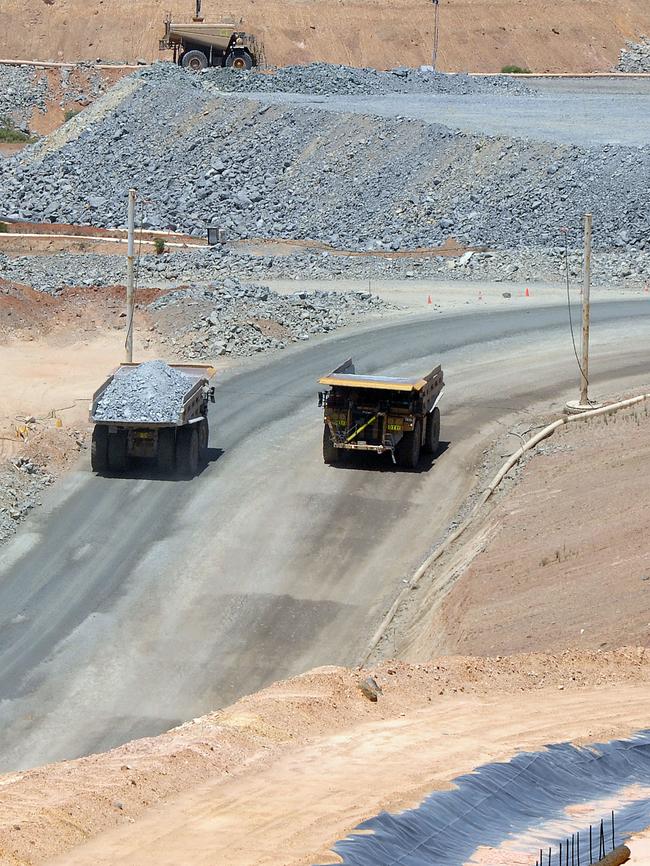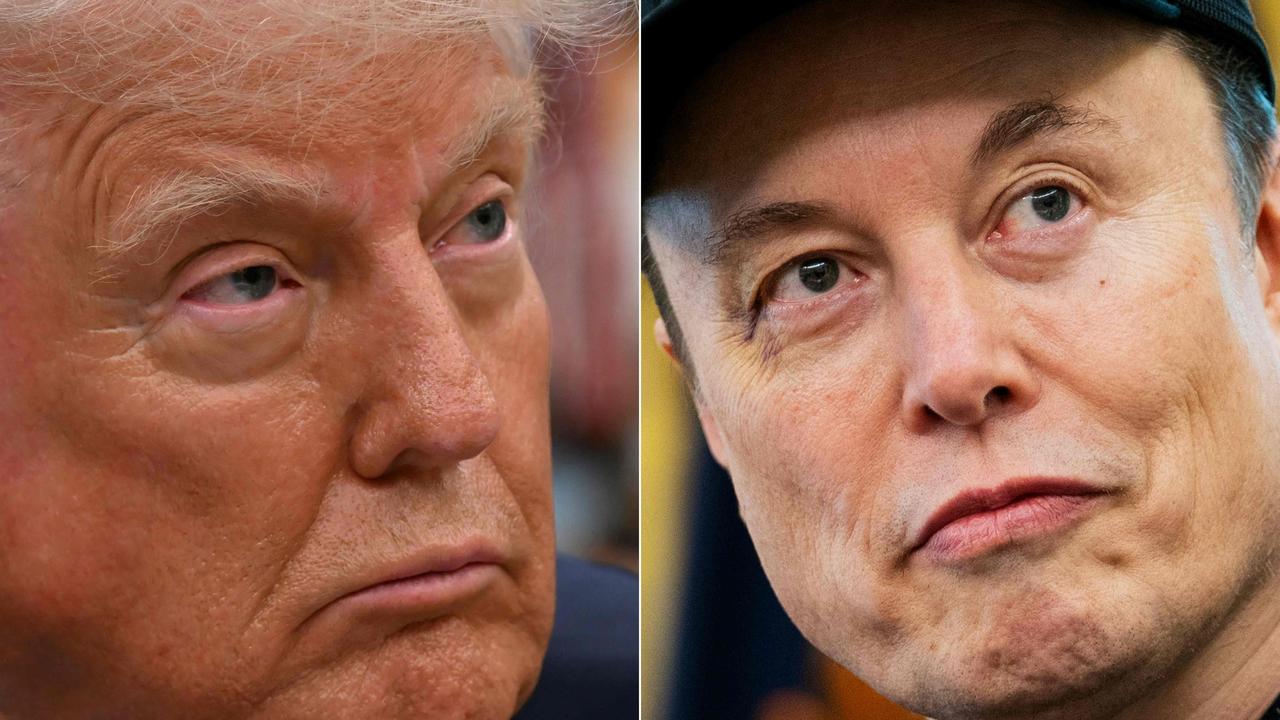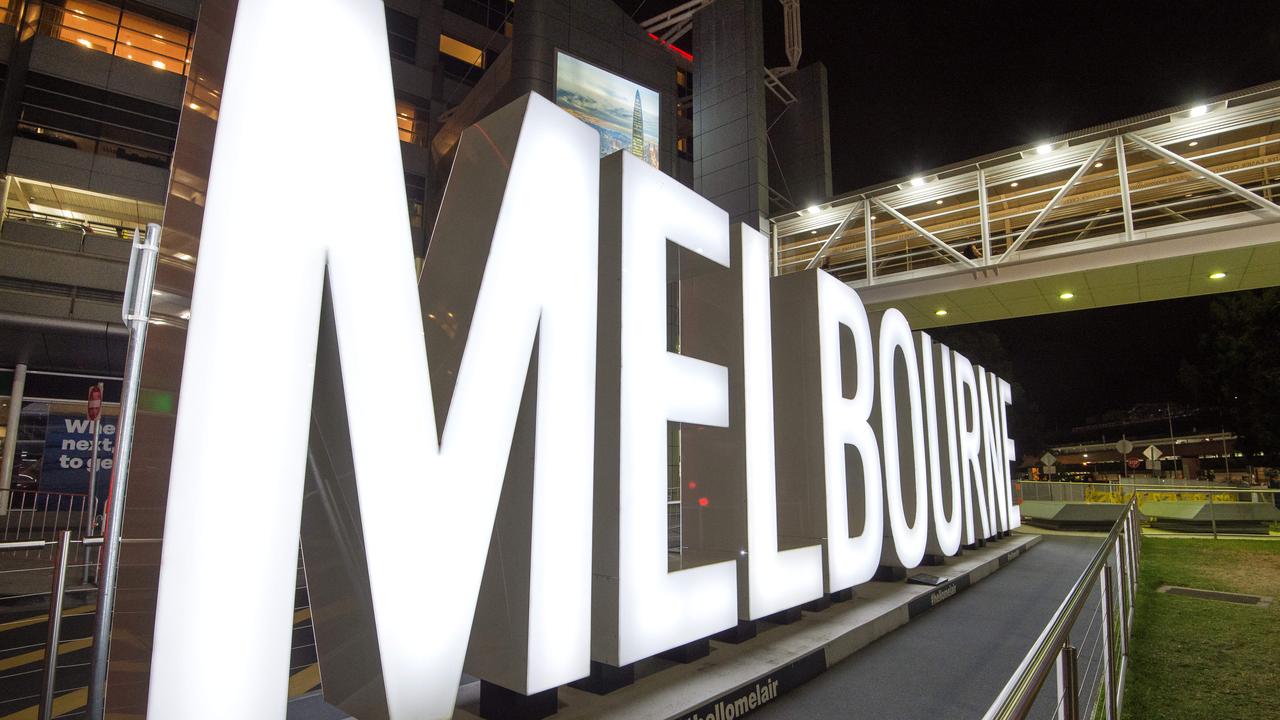
That $24bn all-share deal delivered Palmer two of the world’s most productive gold mines – Cadia in Australia and Lihir in PNG – for a steal. It also gave two growth options in Red Chris (Canada) and Brucejack (US). It gave Palmer’s Newmont even more leverage to gold and increased exposure to copper.

Global events have rapidly swung behind gold, and after Newmont had a slow start as it was absorbing Newcrest, booming gold prices are now firmly benefiting Palmer.
Gold is old as the planet itself, but the precious metal could just as well be the new AI boom. Although, this trade in the metal is purely about investors fleeing to safety.
Gold has been setting record highs nearly every week of Trump’s presidency, and last week touched an eye-watering $US3357 an ounce. Nervous central banks too have been big buyers of gold again, adding to demand.
It’s up 25 per cent so far since the start of the year and more than 40 per cent over 12 months. This comes as stockmarkets have been thrown into turmoil, swinging from correction to a bear market.
With China and US showing few signs of backing down on their trade war and predictions of tariff-linked economic hit to come – including, pointedly, from US Federal Reserve boss Jerome Powell in recent days – gold looks set to stay higher for longer.
Fund managers have long been cool towards gold because as an asset class, it doesn’t do anything except store value. Unlike copper or iron ore, it has very few industrial applications. It doesn’t pay dividends or generate cashflow.
Gold is mostly accumulated rather than consumed. This means it sits in vaults as the ultimate safe haven that investors flock to in times of inflation or crisis.
Trump represents just the right crisis to come along at the right time for gold.
This means the appeal of the metal is fast changing.

Big investors have been quietly moving into gold mining stocks and even with the metal at a record price, they still believe there’s more upside to come. Oaktree’s Howard Marks is among the contrarians, standing by his long-held position gold ultimately lacks intrinsic value.
Influential fund manager Phil King this week told investors in his listed Regal Investment Fund that many gold miners haven’t kept pace with the rally in the gold price.
“A lot of these gold miners will be having record profits over the next few years,” King says. “We think there should be some very large earnings upgrades over the next few years, and we think that the gold mining sector should continue to do extremely well”.
The global gold boom also stands out as one of the biggest short-term calls by Australian investors in recent years.
Palmer’s big win with Newcrest has come at the expense of the large and mostly passive funds that were holding the Australian miner. Worse still, they were warned of this at the time.
‘Lacking fairness’
The Newmont buyout of the then under-pressure Newcrest effectively saw Australia’s biggest gold champion vacate the field. That title has since been passed to Northern Star.
And Northern Star’s rapid rise since the Newcrest buyout has left many wondering if this was another case of Australian investors selling out too cheaply.
The Newmont offer secured 92 per cent of the shareholder vote in support of the takeover. That came about despite the independent expert Grant Samuel declaring that the buyout offer “lacked fairness”. On some measures, Palmer’s Newmont paid virtually no premium for control of Newcrest, in the process handing over some of the best-regarded gold deposits in the world to the US investors.

Not only was Newcrest’s share-based ratio pitched too low – it was below the very bottom end of Grant Samuel’s estimated valuation range ($18.64 at the time). Complicating this, Newmont’s shares had substantially underperformed in the lead-up to the vote, further eroding the return to Newcrest investors.
Still, Grant Samuel went on to endorse the offer, arguing Newmont’s value (and therefore ultimate returns to Newcrest investors) could pick up following the transaction.
This opinion was more of a best guess than anything, but was enough for Newcrest’s board, led by Peter Tomsett, to endorse the buyout and agree to a massive break-fee.
The Newcrest deal was entirely paid for with Newmont shares, so local investors continued to at least get exposure to gold through their new holdings in the US company.
However, it also meant they traded in 100 per cent exposure to what was then one of the largest gold producers in the world, with high-quality long-life mines and reasonable copper exposure, for a 22 per cent stake in the combined and more diversified Newcrest-Newmont. The merged group gave them far less exposure to copper while taking on other metals like zinc and lead.
In the 18 months since Newcrest takeover was effective, Newmont shares have added around 40 per cent.

However, shares in ASX-listed Northern Star have jumped more than 110 per cent, helped by the booming gold price. Northern Star, part owner of Kalgoorlie’s Super Pit, just this week won over shareholders in smaller De Grey, who have endorsed a $6bn buyout.
Northern Star has already overtaken the $24bn value Newcrest fetched when it was snapped up in 2023, even though the Australian producer has a third of the annual gold output.
Another ASX junior has also grown up since the Newcrest takeover. Evolution has added 140 per cent over the same period.
The gap between the Aussie listed players and Newmont is arguably the value Australian investors left on the table.
Another one to watch will be London-listed Greatland, which picked up Newcrest’s Telfer mine and nearby Havieron project under construction in the Pilbara region, which were discarded in the takeover.
Greatland is planning to move its listing to the ASX, where it too is eyeing the higher premiums that miners tend to attract here, given the weight of passive money.
With a current market cap of around $3bn, Greatland wants to become another mini-Newcrest. The Havieron mine, which is expected to come onstream in the next two years, is attracting the most attention among former long-time followers of Newcrest – if metal prices hold up this will represent even more of a windfall to the London miner.
Protest vote
The undersold Newmont deal puts an different perspective on a major investor arm-wrestle taking place in a different sector.
Mostly industry funds are telling the ASX they should be getting a say in a vote on James Hardie’s plans to move its primary listing from Australia to New York as part of Hardie’s unpopular $14bn buyout of smaller rival Azek.
This anger around the location of Hardie’s is really a bigger fight over what they claim is an overpriced bid for the US-based building materials’ player.
Here, Australian investors are demanding more of a say on outbound takeovers, but the same investors are often among the fastest to cash out when it comes to big inbound deals like Newcrest.
It was only through the protest vote of AustralianSuper that Origin Energy very narrowly avoided selling itself too cheaply to Canada’s Brookfield. Ironically, the Origin drama was unfolding at the same time Newcrest deal was under way. But Newcrest’s buyout sailed through with barely a murmur.
In the past year, Origin shares have rarely dipped below Canadian giant’s Brookfield’s “best and final” $9.39 a share takeover. There’s more upside for local investors when you consider the dividends Origin has paid since. Some funds need to ask whether. like Newcrest, they are taking a short or a long-term view on Hardie’s.
In November 2023, no one could have predicted where the gold price was going.
However, with quality mines that Newcrest was about to give away, it was worth putting up a fight for the Australian gold champion. Yet no one did, and the upside is all for Newmont’s Palmer.
johnstone@theaustralian.com.au






One of the few direct winners out of Donald Trump’s ‘‘Golden Age’’ disruption is a former Rio Tinto executive who these days is based in Denver, and runs one of the world’s biggest gold miners. It’s fair to say Donald Trump getting re-elected and then unleashing a furious and globally disruptive trade war probably wasn’t in Newmont Corp boss Tom Palmer’s long-running desktop analysis of Australian gold miner Newcrest. It was even less likely when he actually pulled the trigger on his buyout of Newcrest in early 2023.